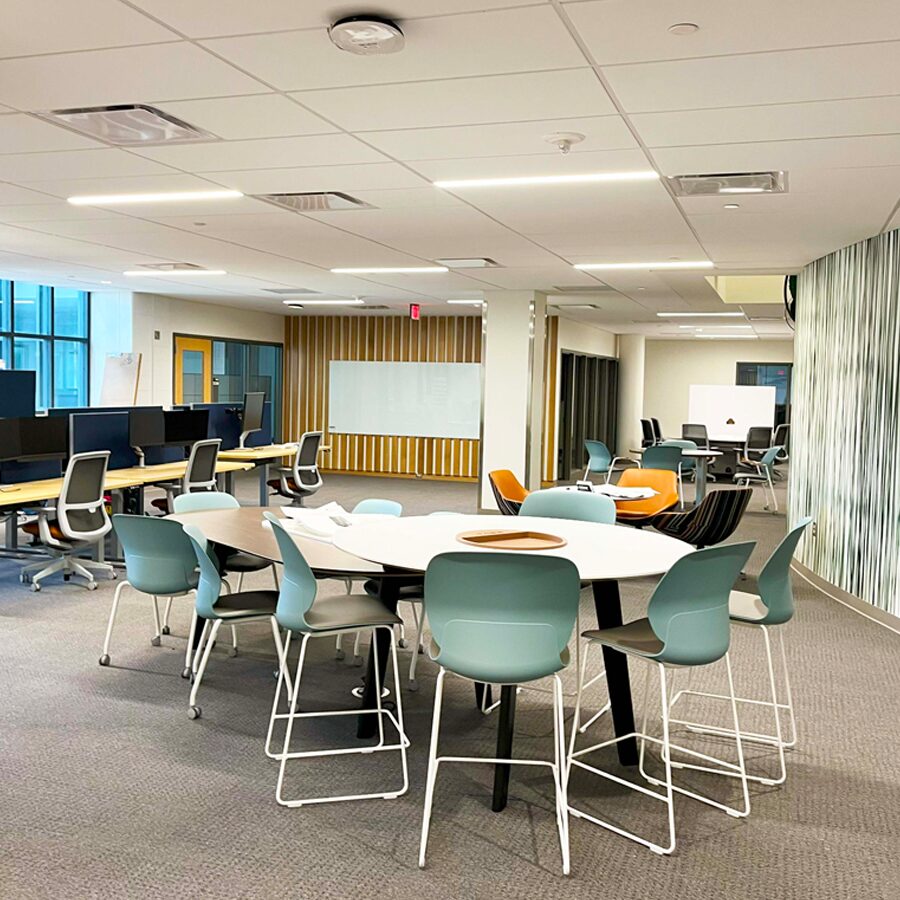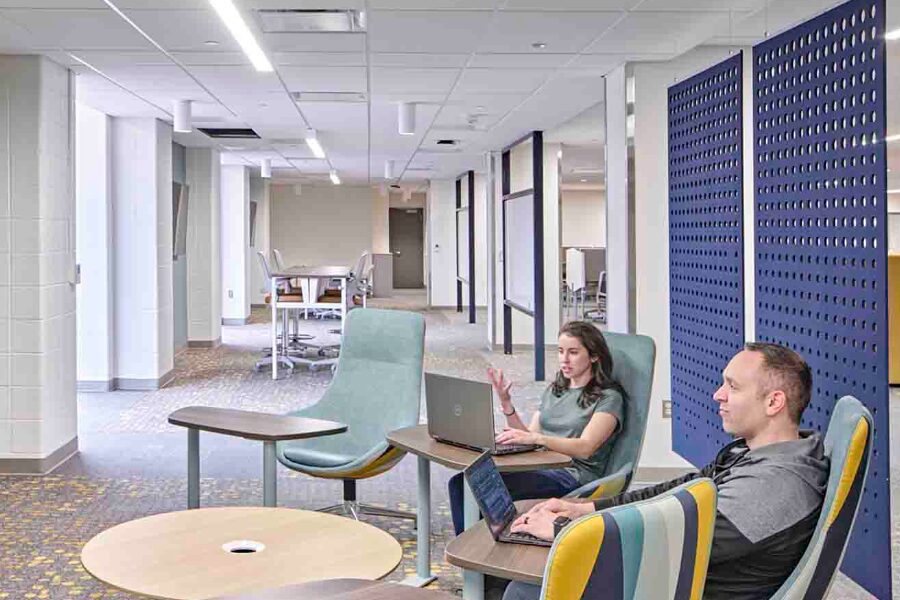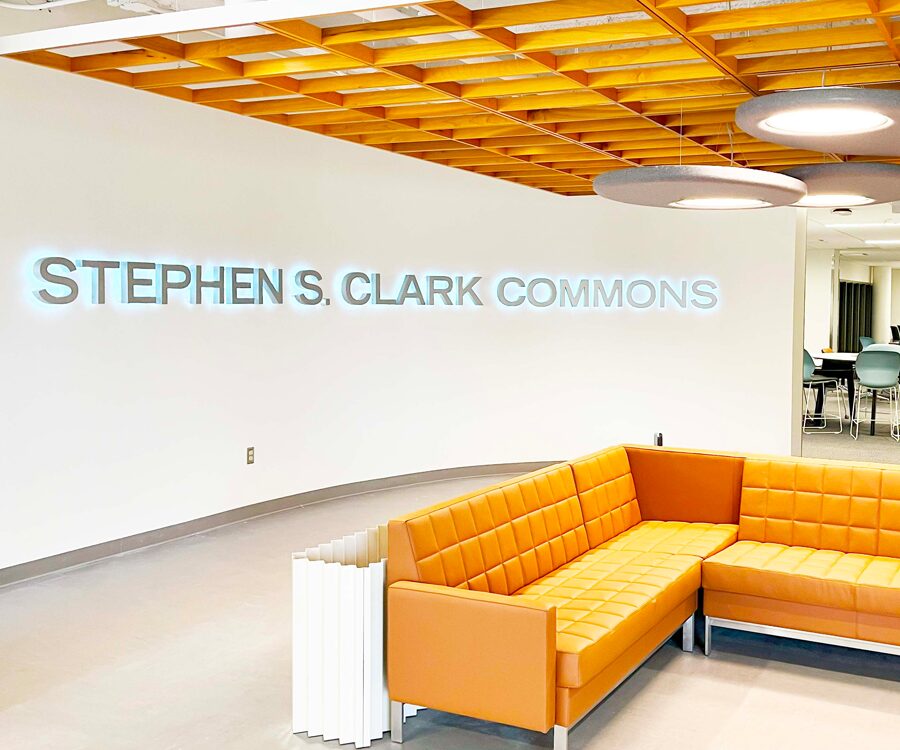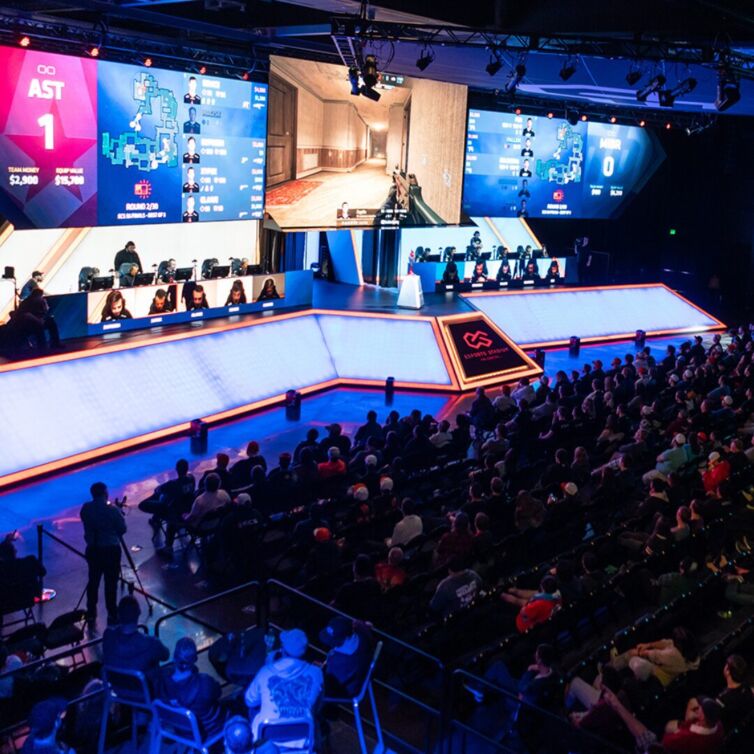The Library Revolution
Exploring the Evolution of the Library | March 1, 2024
Universities consistently undergo renovations as part of their commitment to improving and modernizing the learning experience. Ensuring their students have access to the latest technology and facilities is imperative for heightened learning.
As part of this effort, libraries are transforming into an innovative hub for research, digital media, and may act as a centralized location for renting out various types of equipment.
The transformation has been driven by a heightened focus on collaboration – a principle that college and university’s libraries are embracing to meet the needs of their communities.
Universities, Renovations, and Libraries
Ongoing changes on campus present the opportunity for building upgrades and transformative renovations. Typically seen as a place for quiet study and research, libraries are now incorporating maker spaces, AR/VR rooms, and podcasting studios.
These changes have been brought to the forefront of higher education planning due to ongoing shifts in education paired with technological advancements.
These changes go beyond physical modifications to the building’s core structure; presenting colleges and universities the opportunity to rethink how libraries can work with modern learning environments.
Transformation has been driven by a heightened focus on collaboration – a principle that college and university’s libraries are embracing to meet the needs of their communities.
University of Michigan, Shapiro Library; Renovation & Modernization
Recognized among the top ten academic research libraries in North America, the University of Michigan’s Shapiro Library stands out for its commitment to offering outstanding resources and services to students, faculty, and the broader community.
In pursuit of enhancing the learning experience, the University has made significant renovations to their library, adding 37,500SF to the existing building. The renovations provide students with access to an open and welcoming environment for study and collaboration.
What’s New?
Taking into account the new ways students study, an emphasis was placed on increasing the space for open seating and collaboration. Large tables with integrated plugs and USB ports are complemented by smaller tables for group projects or study sessions.
The library’s central program is the University’s Digital Scholarship Suite.
The Suite acts as a hub for students seeking help with research data, metadata, visualization, research impact, copyright, open access, and publishing. Students are also able to schedule appointments with Library professionals to further discuss research methods and models.
The Digital Scholarship Suite supports student innovation and experimentation within the library and provides a model for testing ideas from proposal to implementation.
What Does This Mean for Students?
Libraries are no longer meant for just checking out books and quiet study; they are becoming vibrant spaces that promote interpersonal collaboration and interactions.
The introduction of designated interaction areas provides students with the ideal environment to explore different topics and encourages them to think outside of the box.
The modernized libraries can provide students with a newfound sense of community while having access to state-of-the-art research and interactive spaces.
The evolution of college and university libraries is being fueled by an ongoing commitment to community and academic improvement.
The University of Michigan Shapiro Library stands as a prime example, the recent renovations emphasizing the accessibility of its resources and the University’s willingness to adapt new technologies both in and out of the classroom.
For more information on our work for the University of Michigan Shapiro Library, check out our portfolio.







